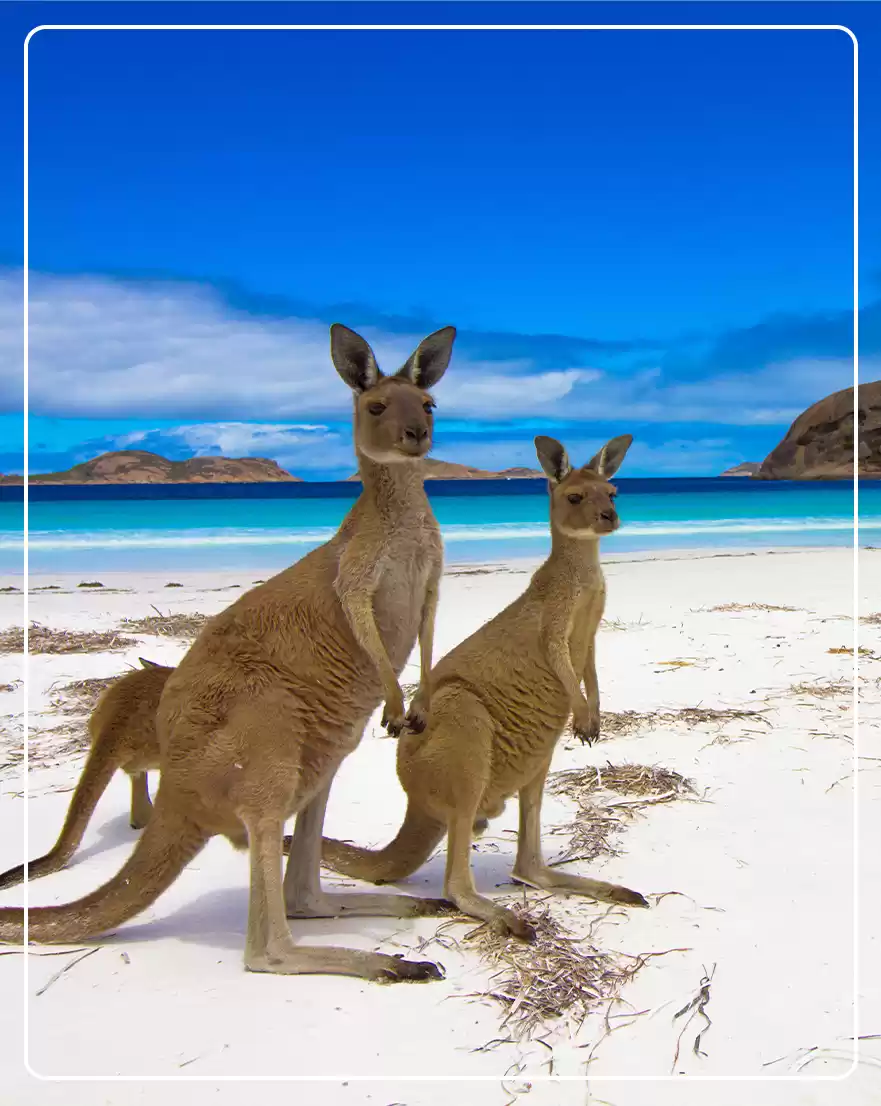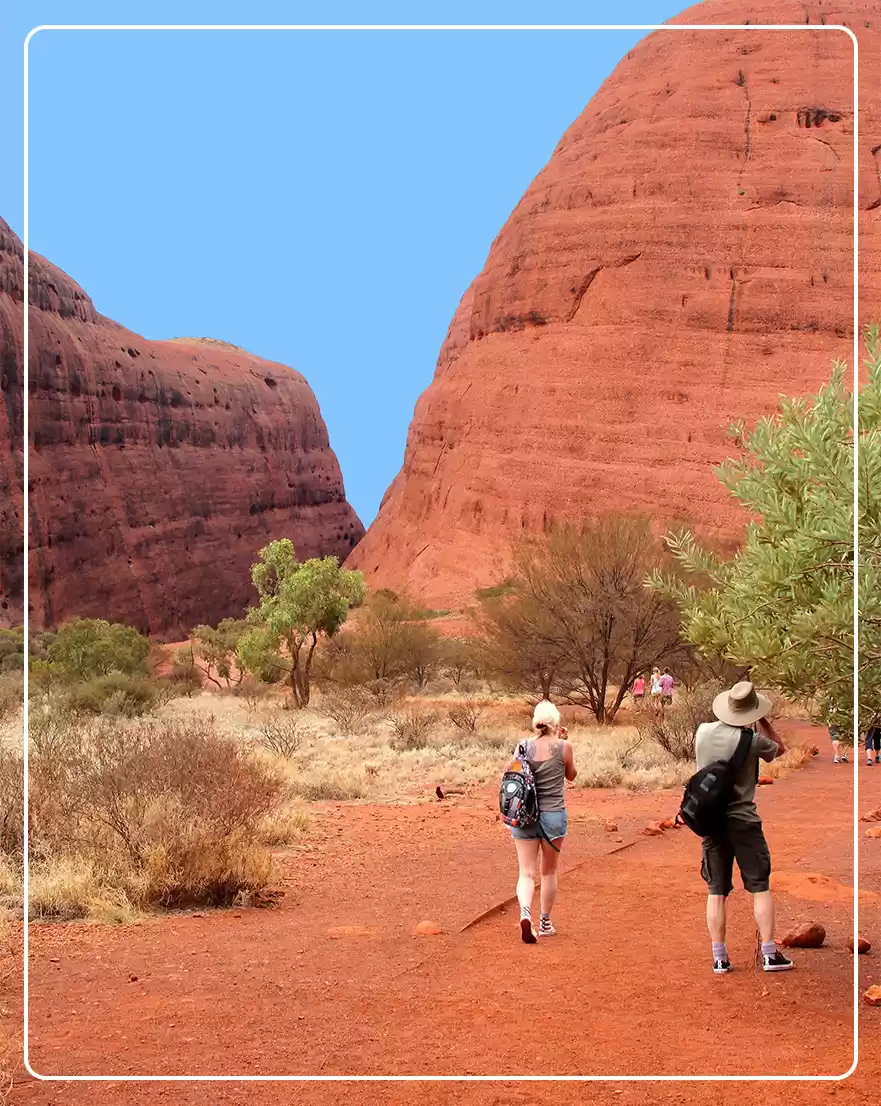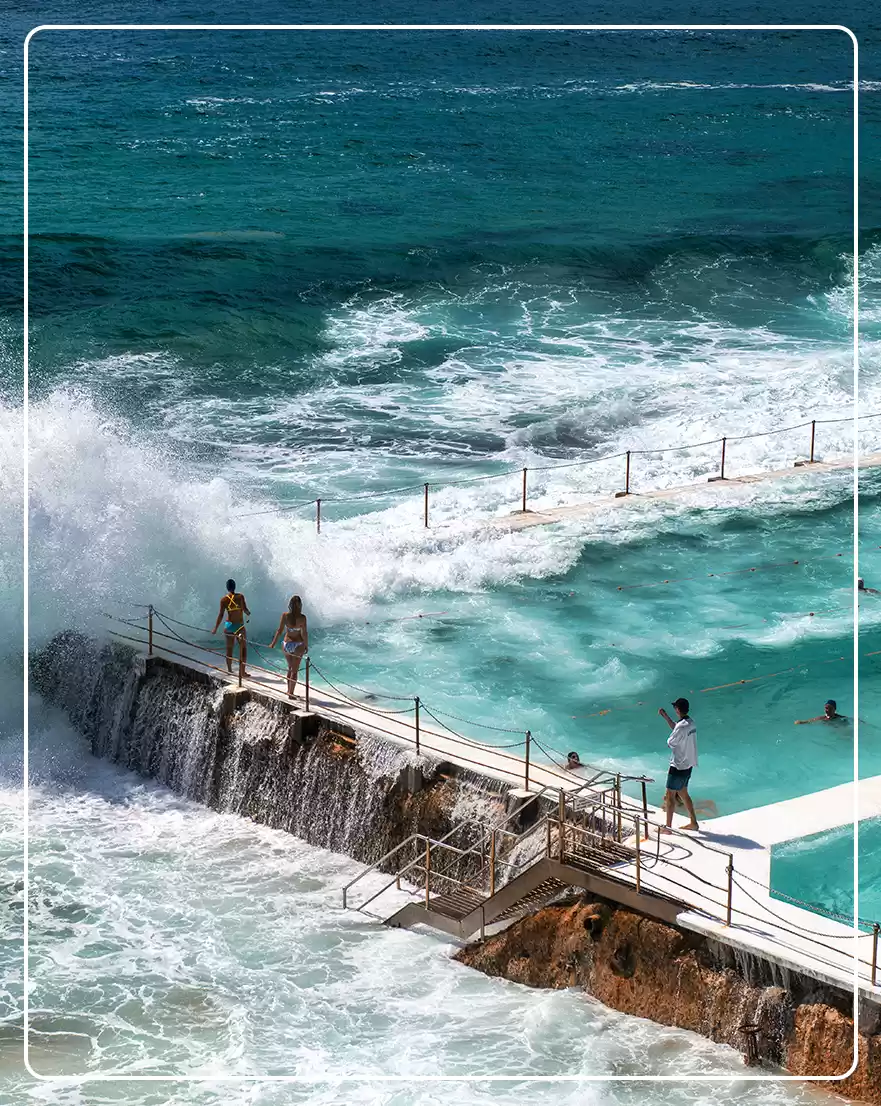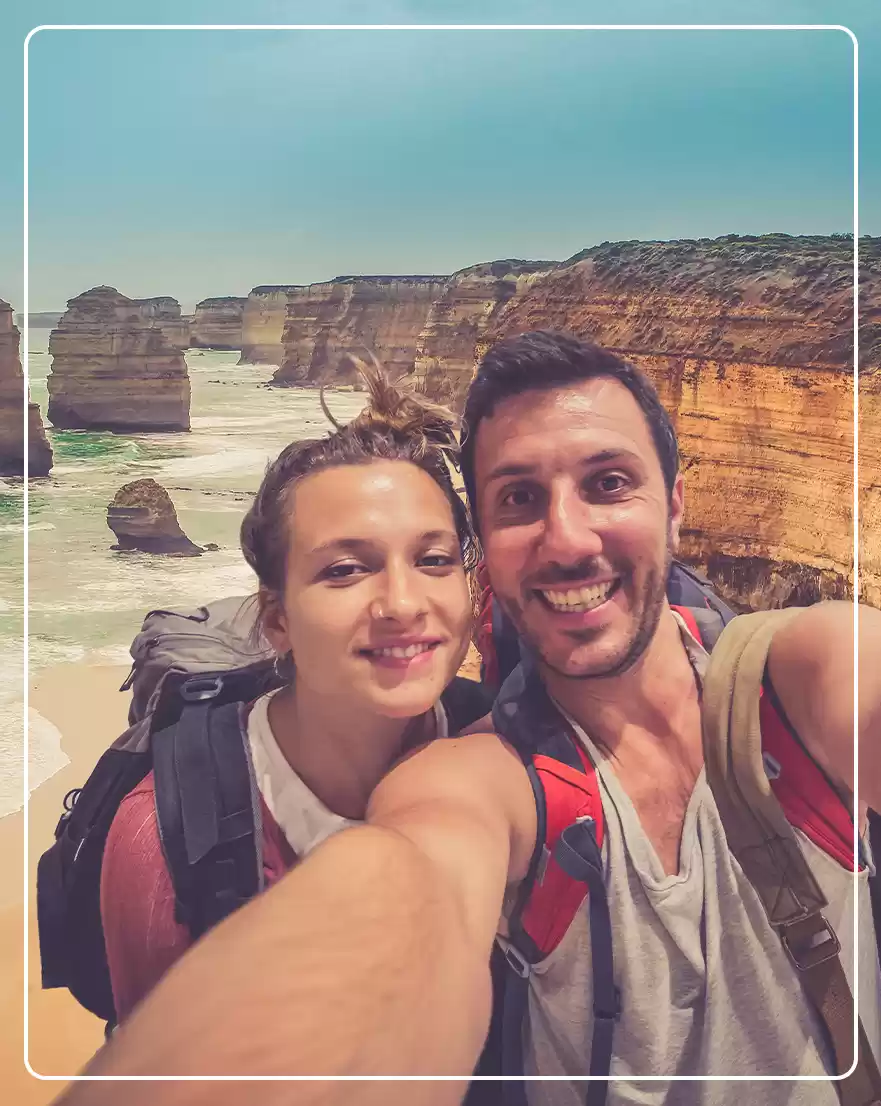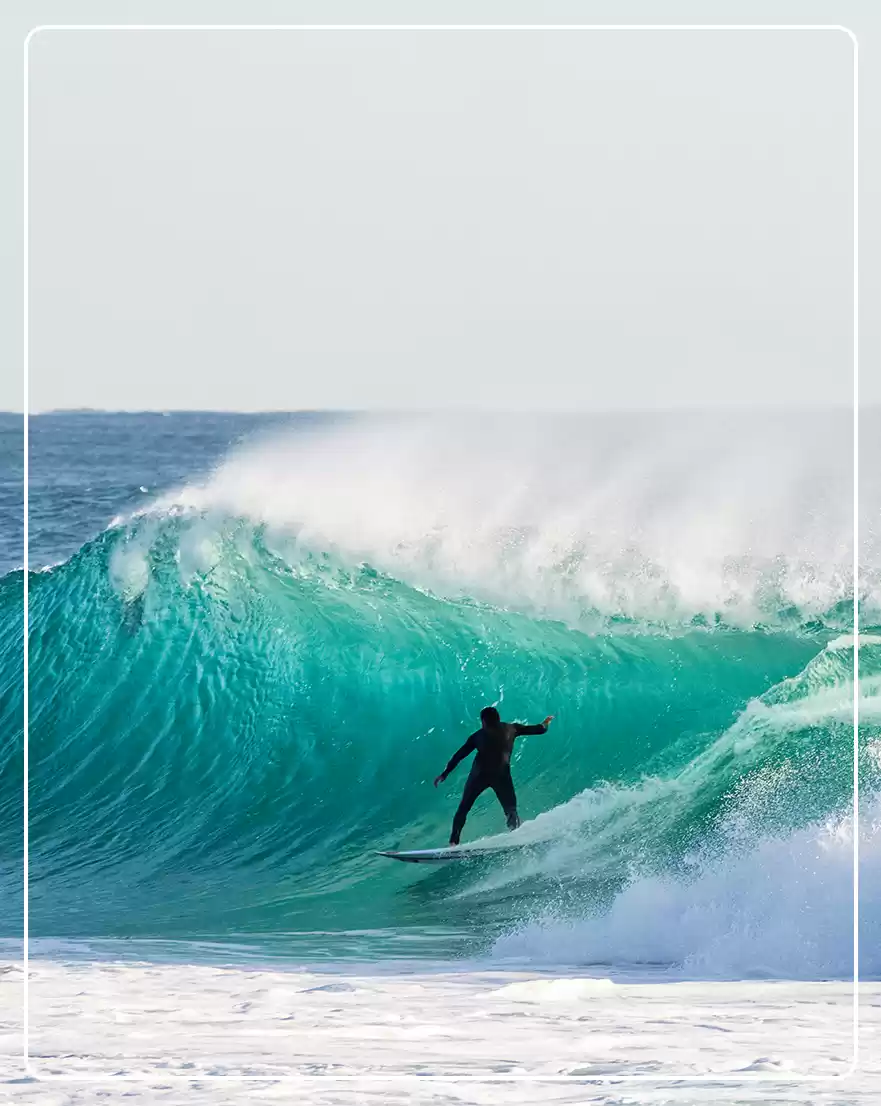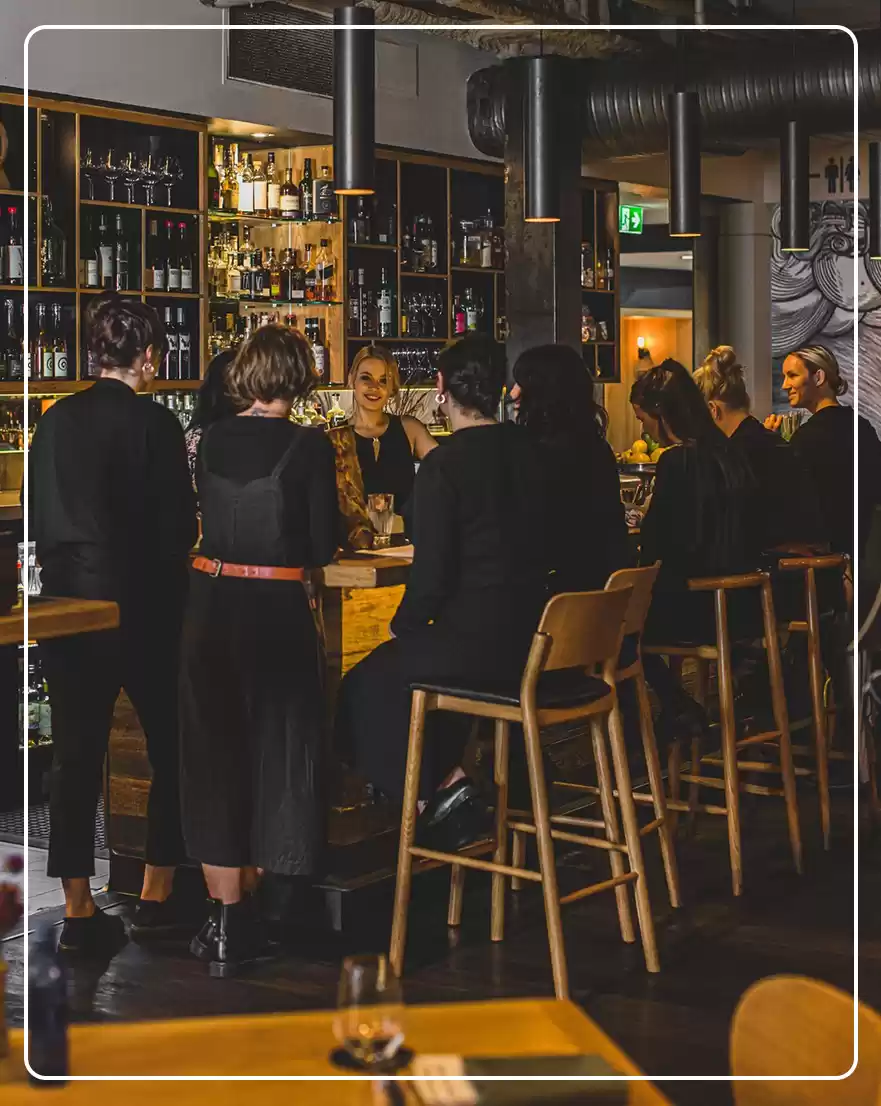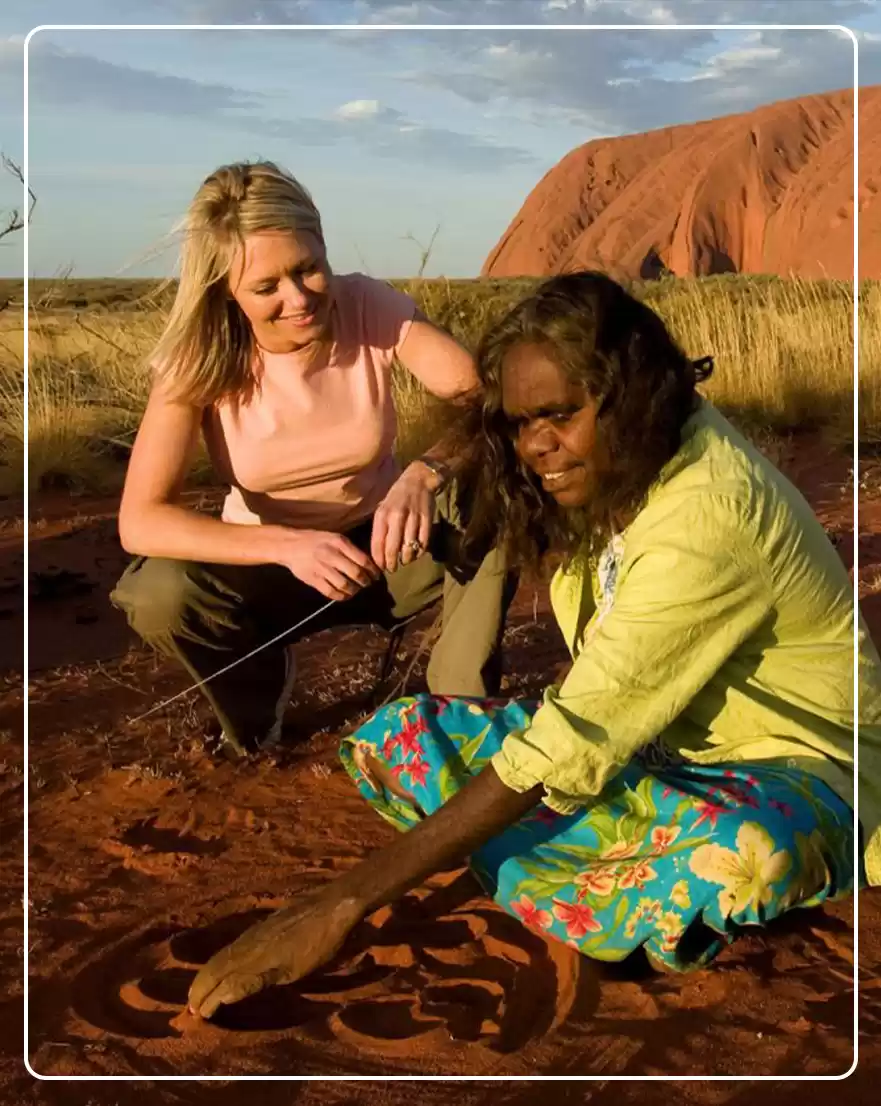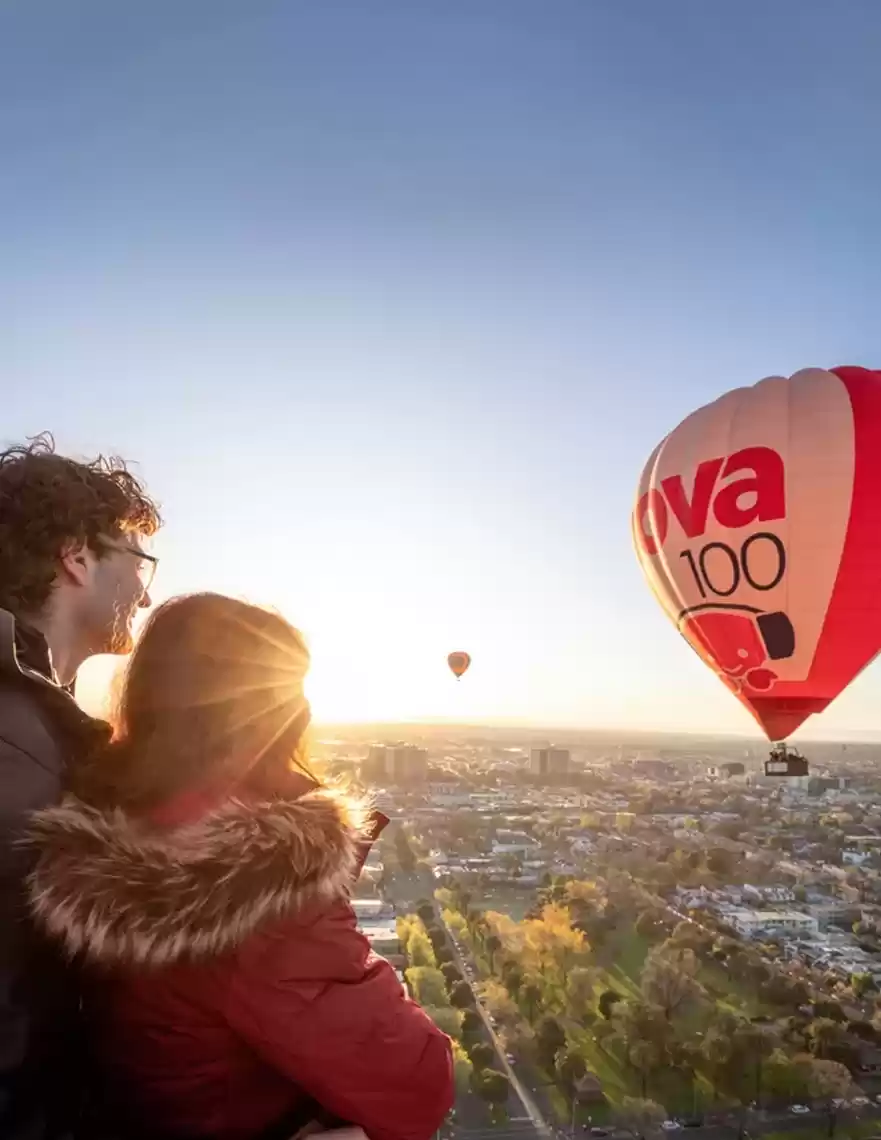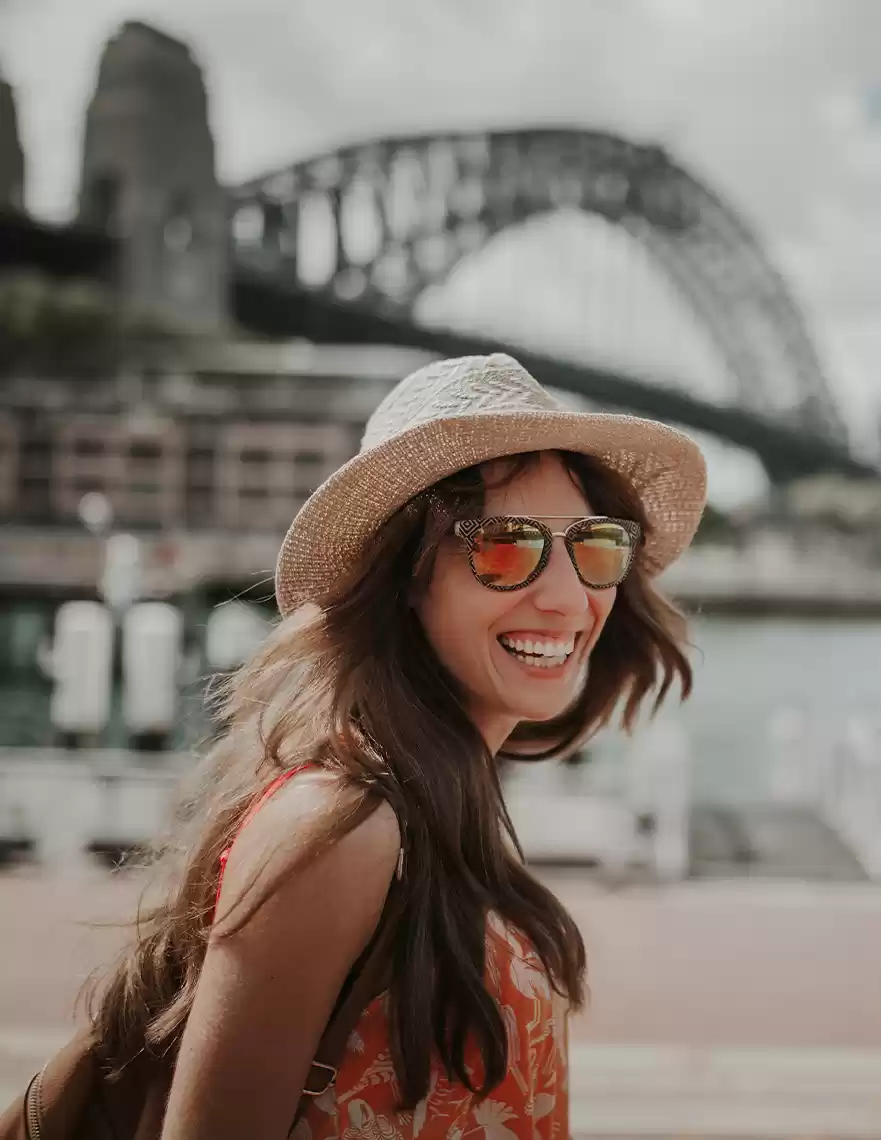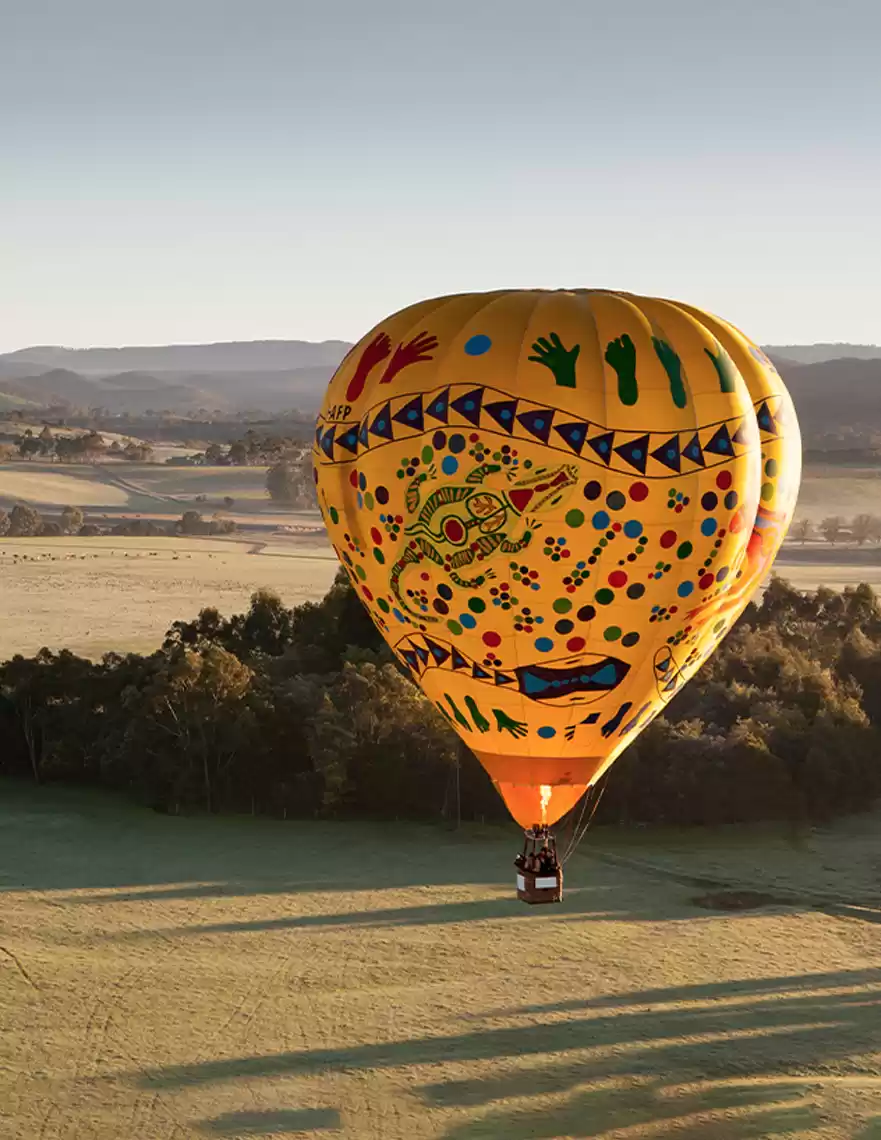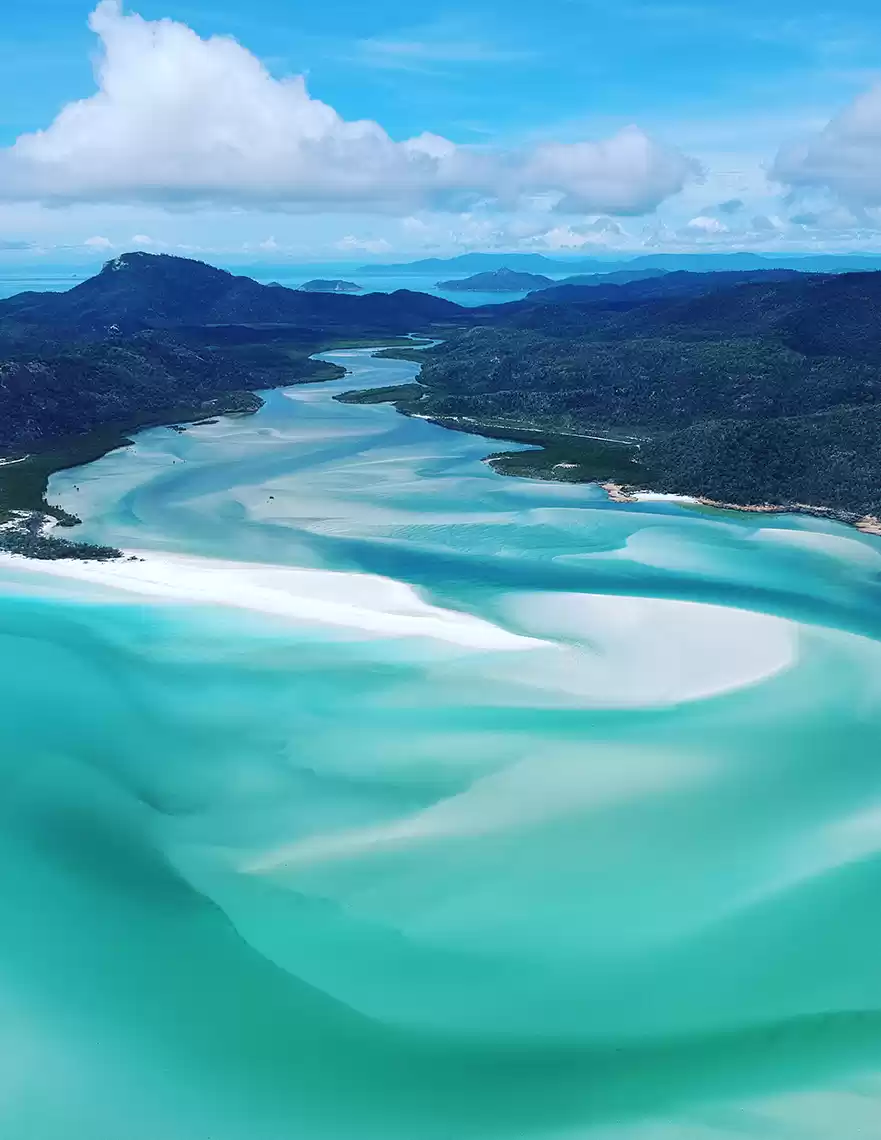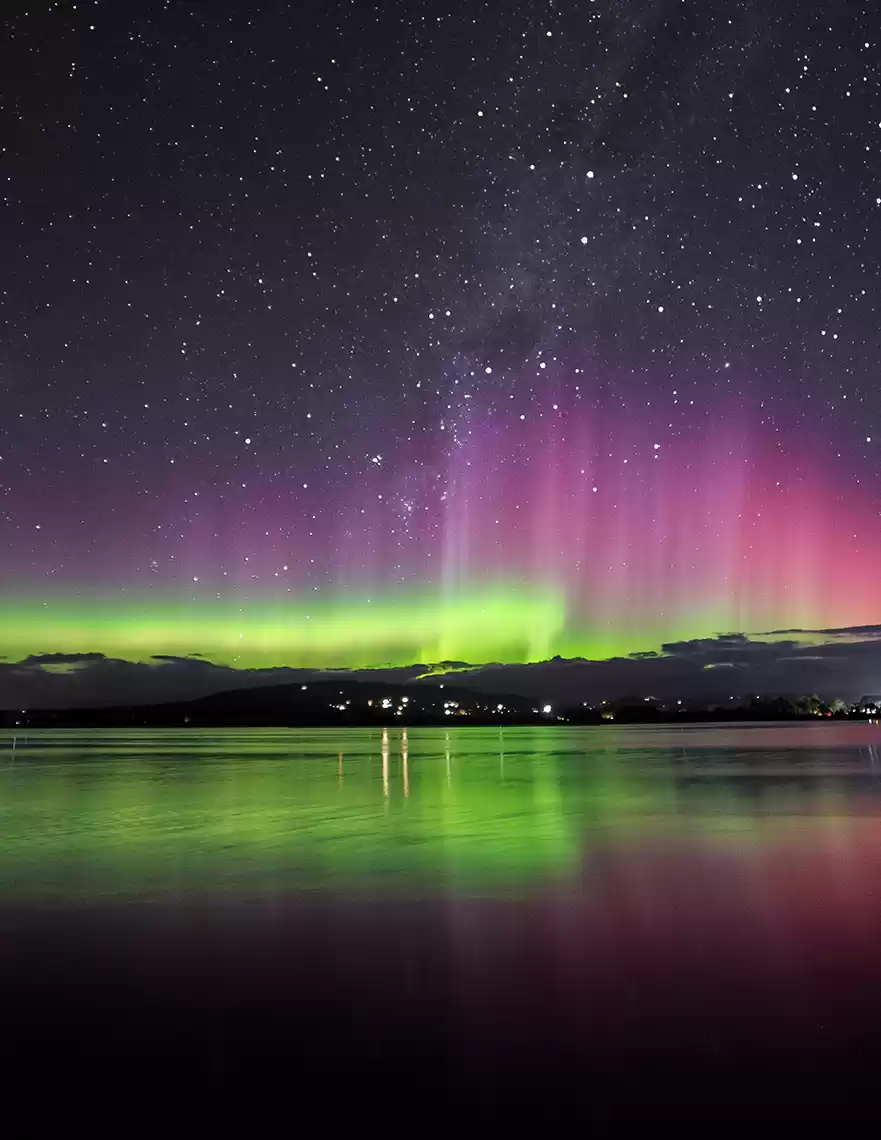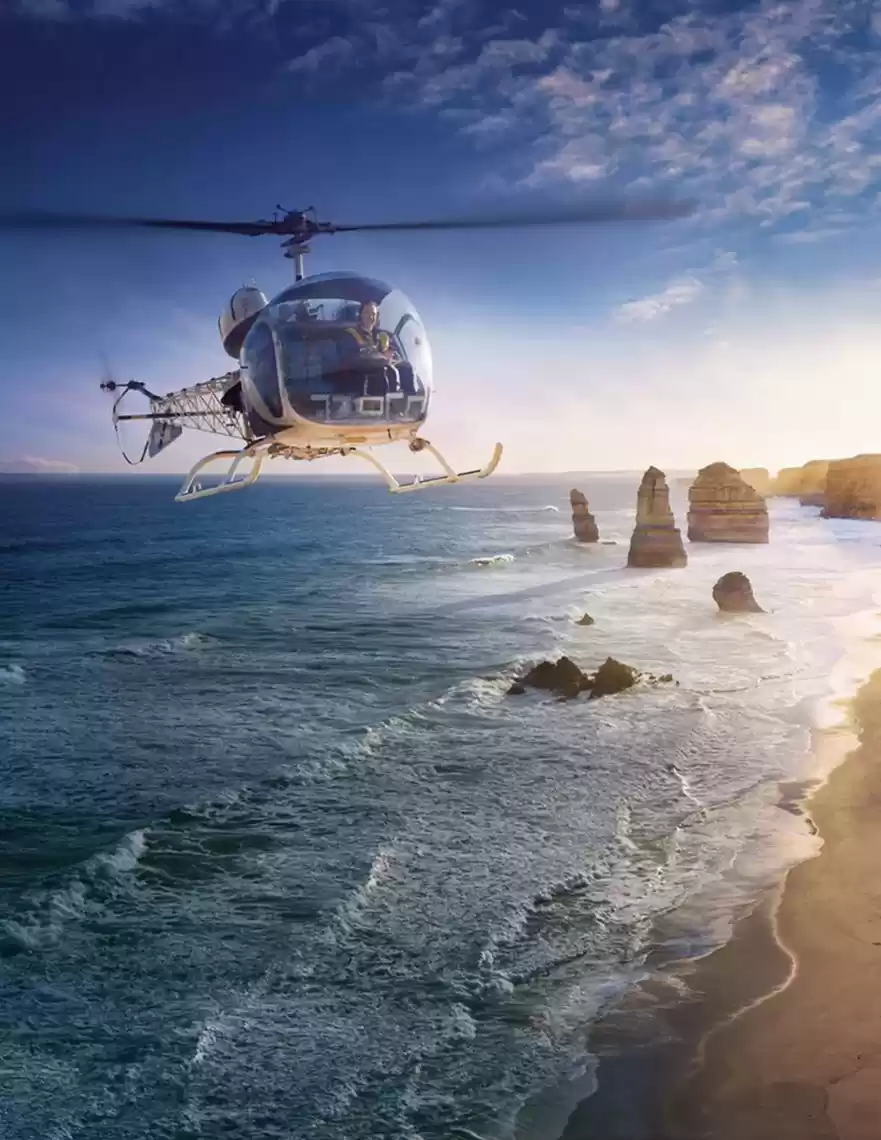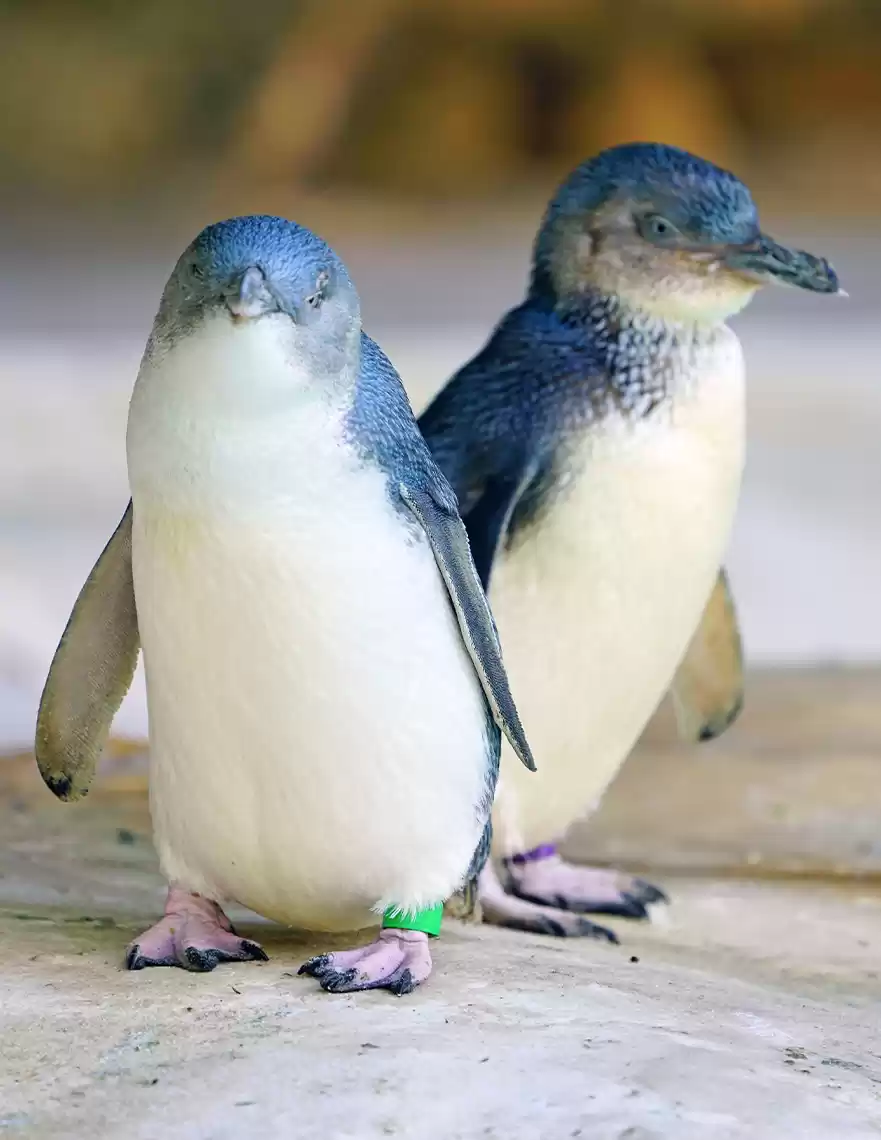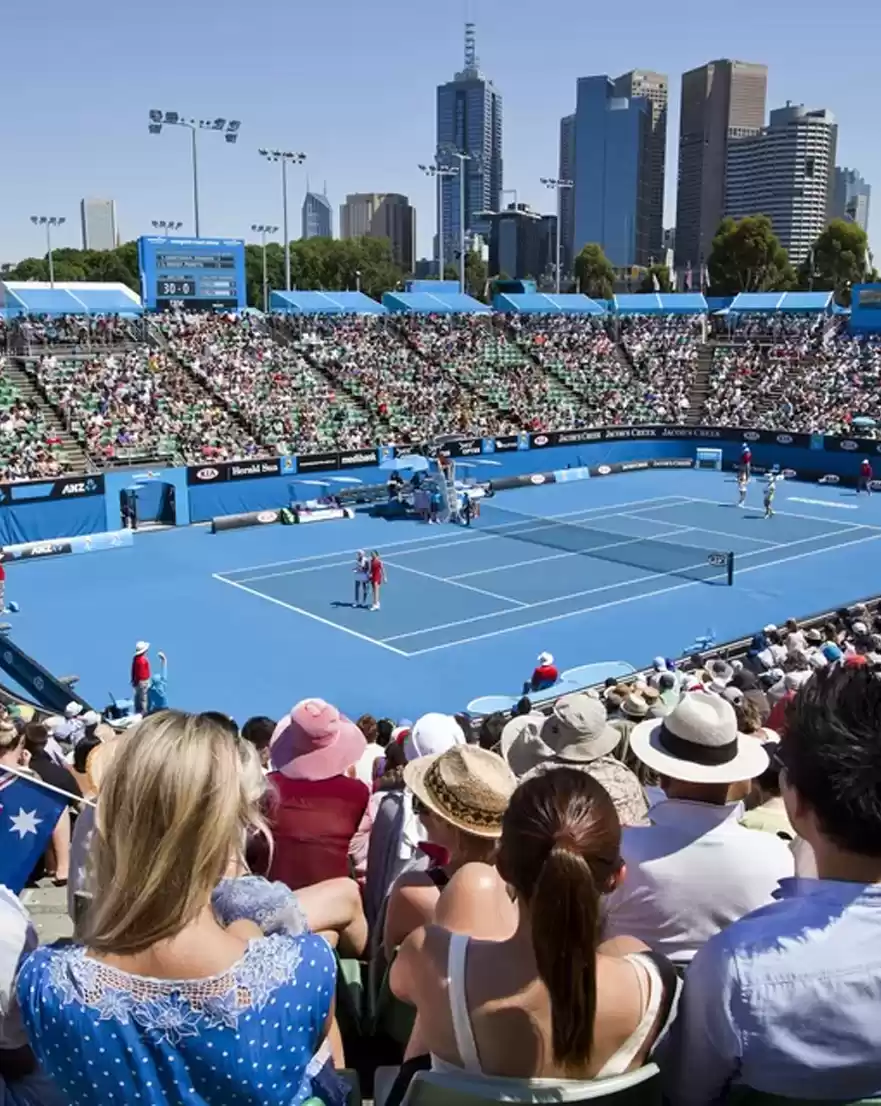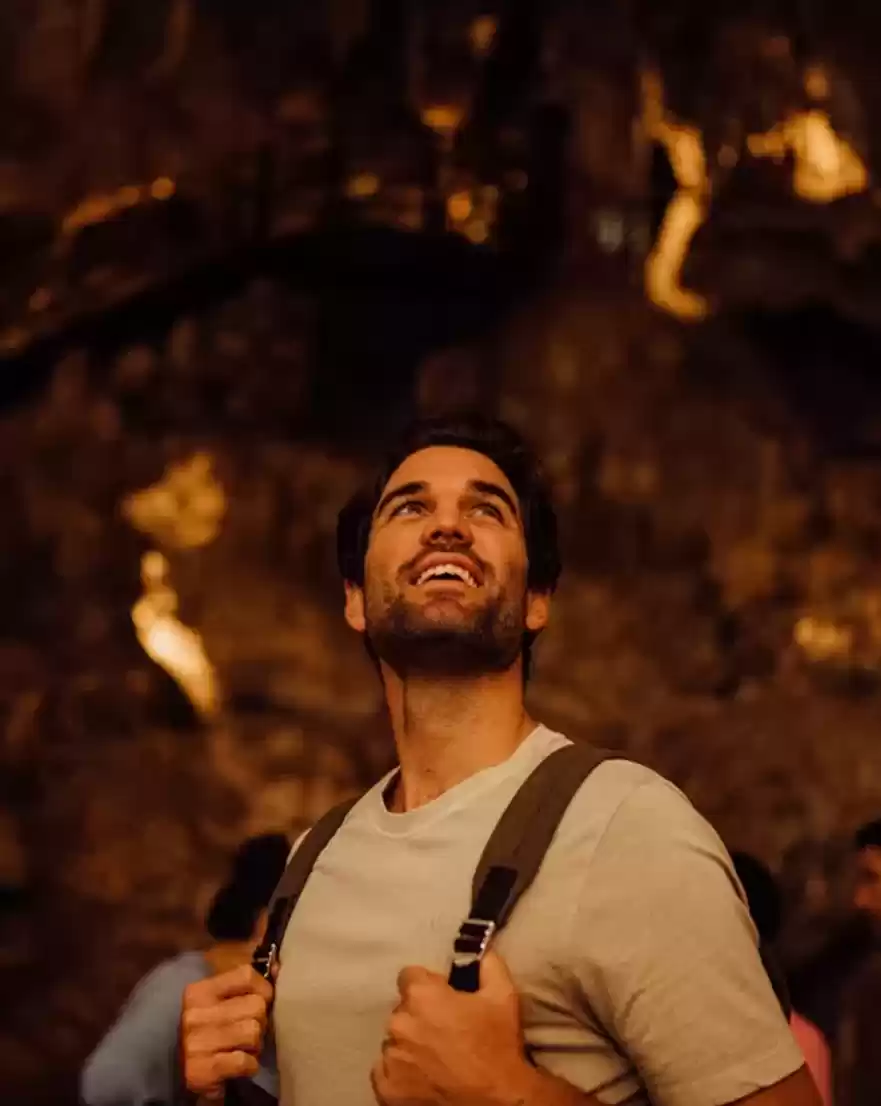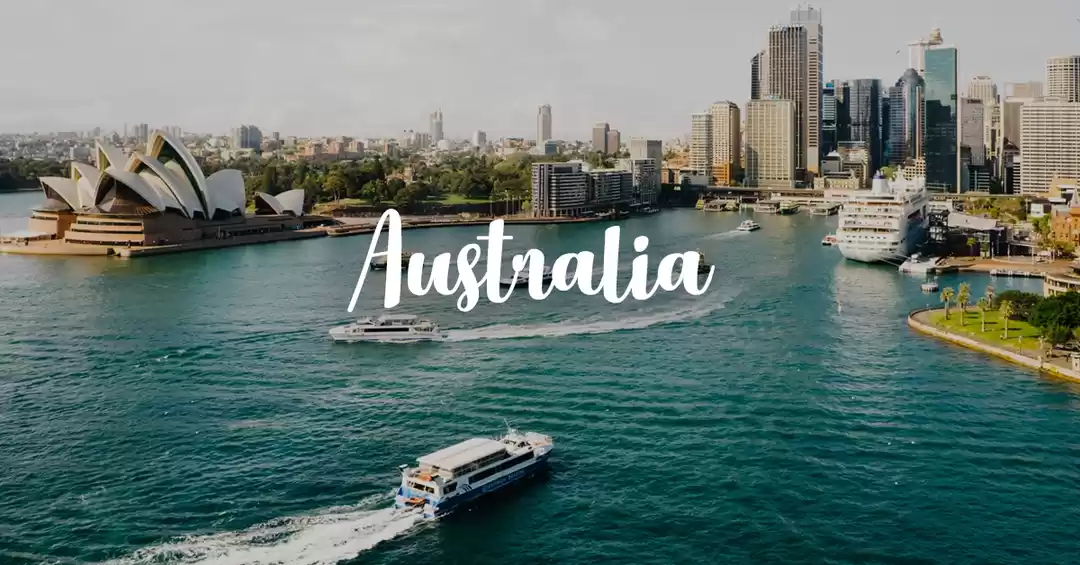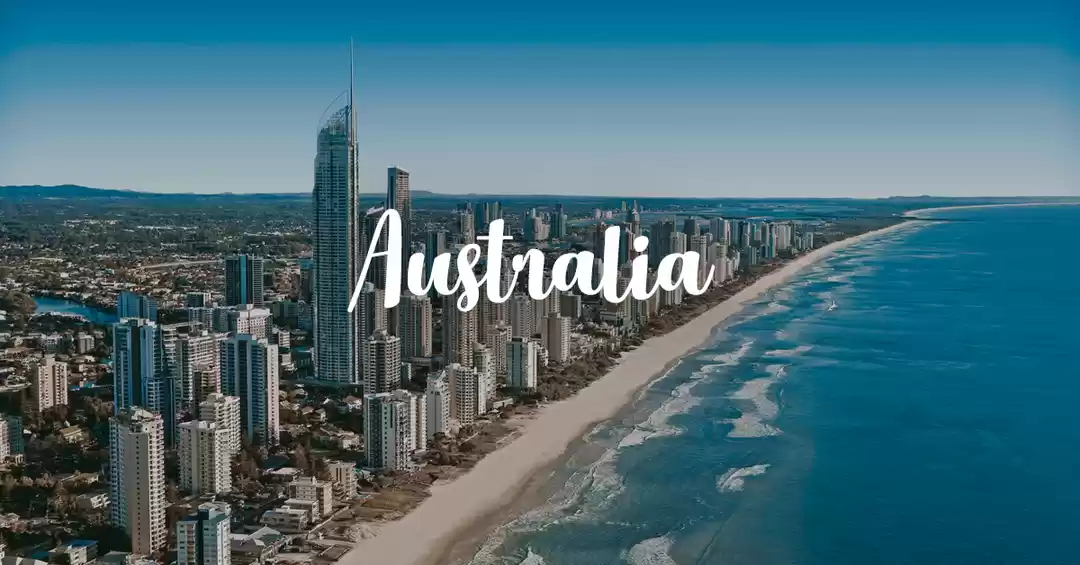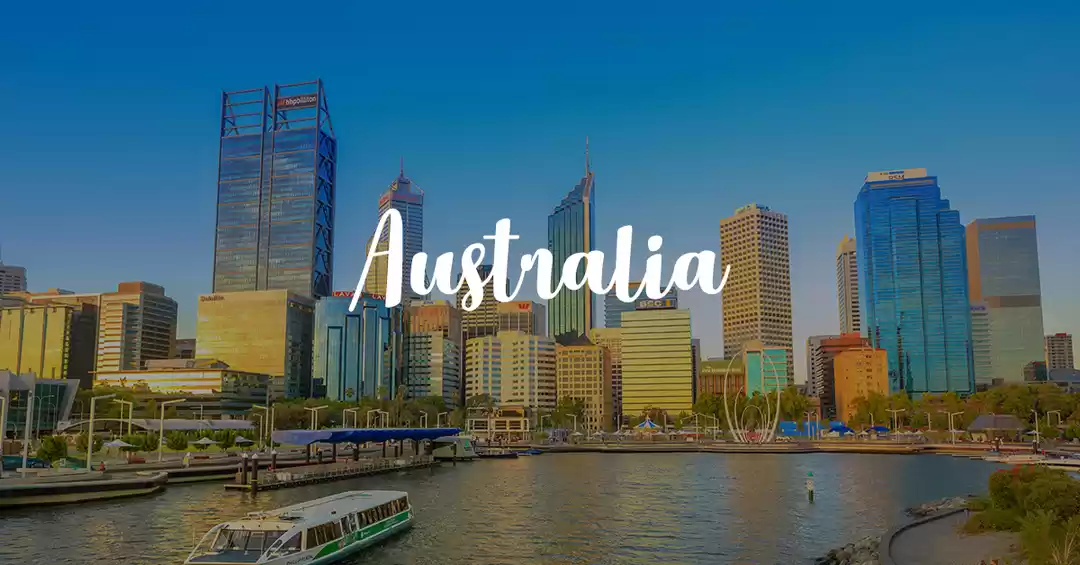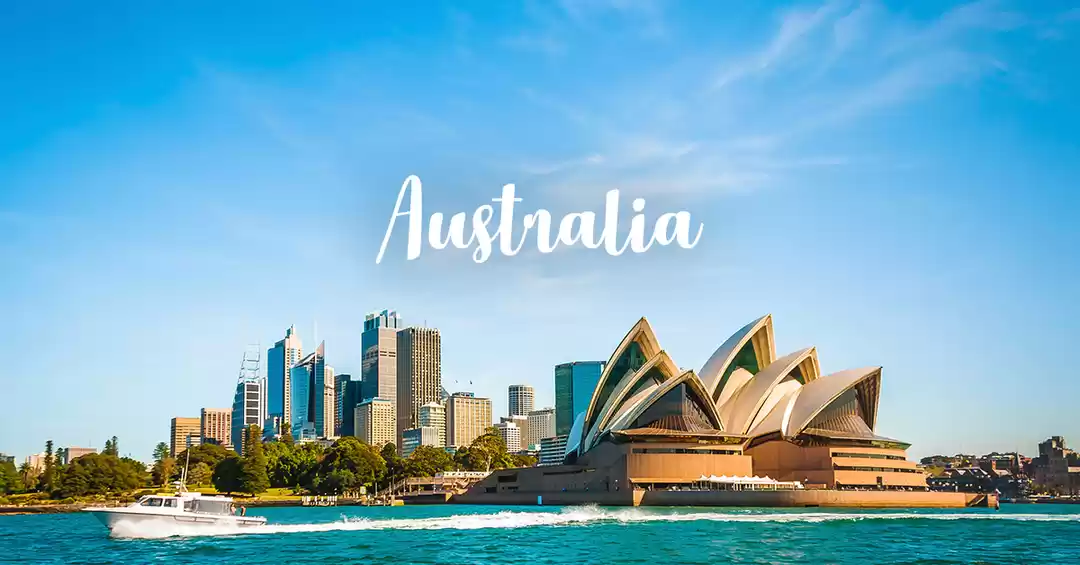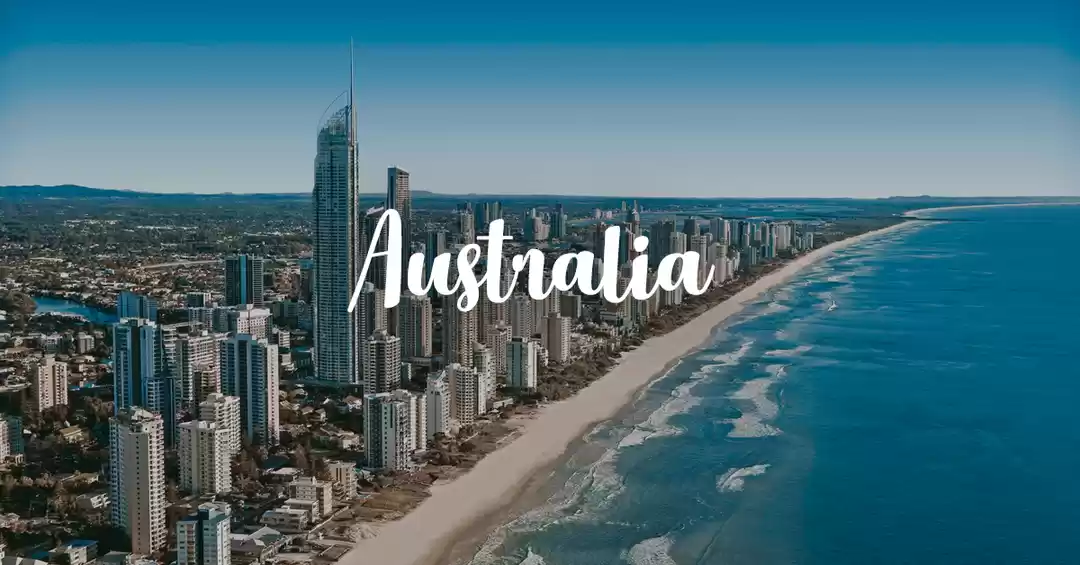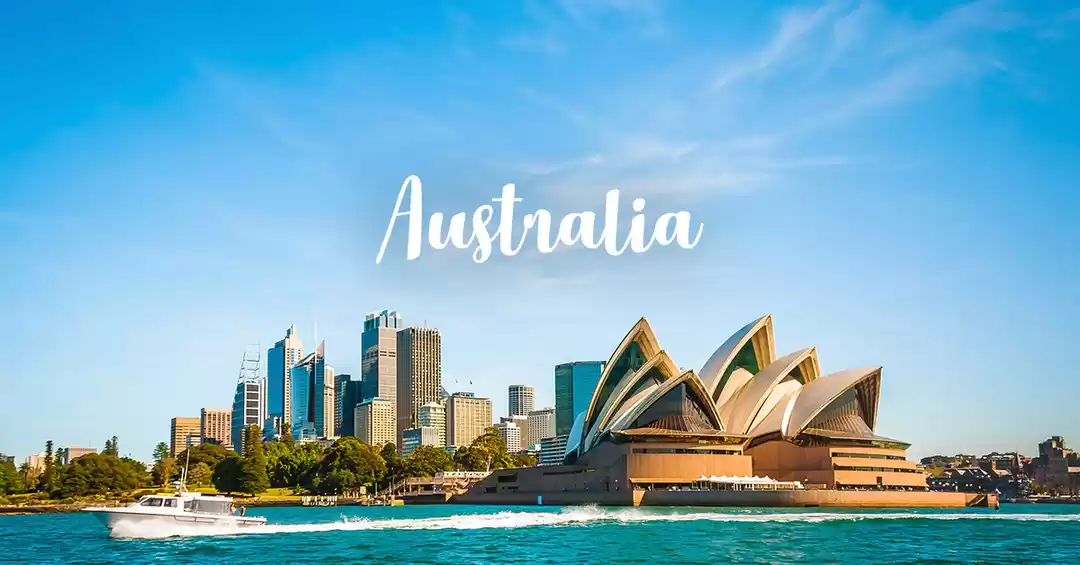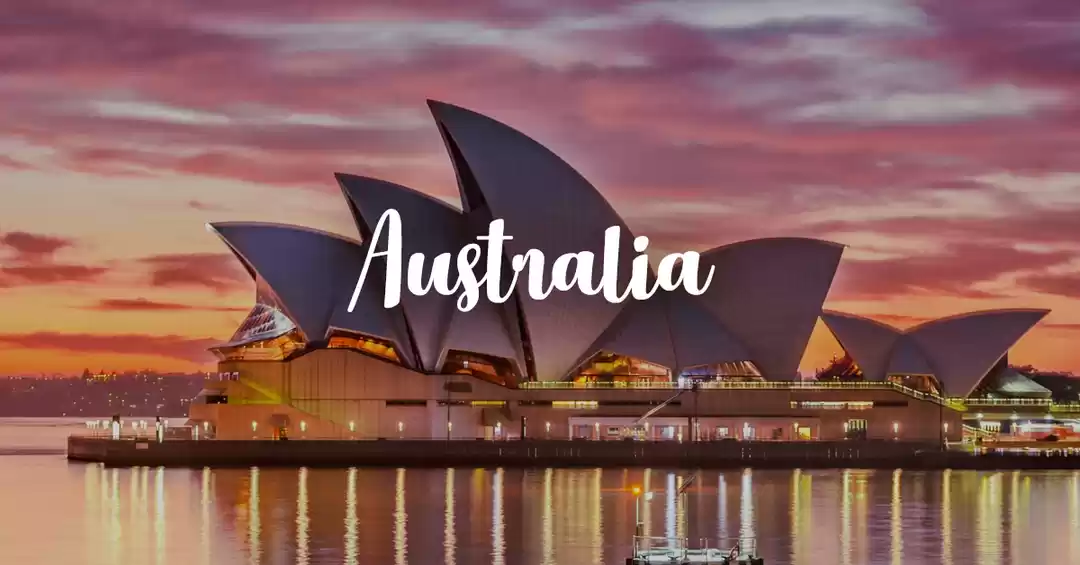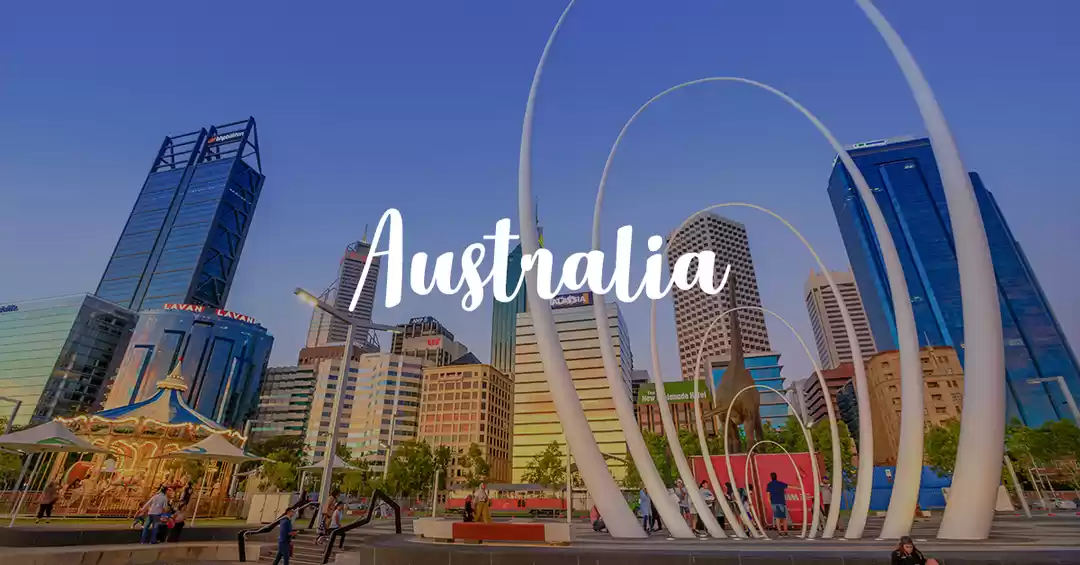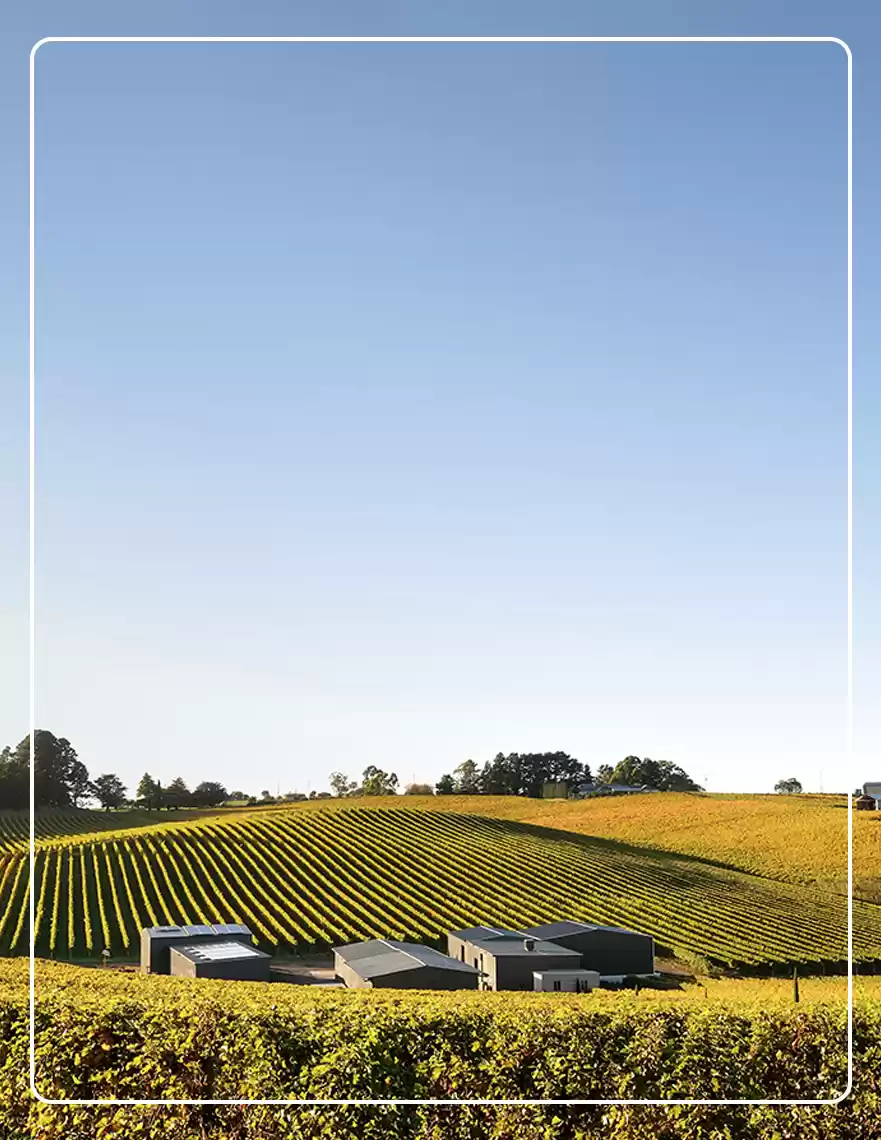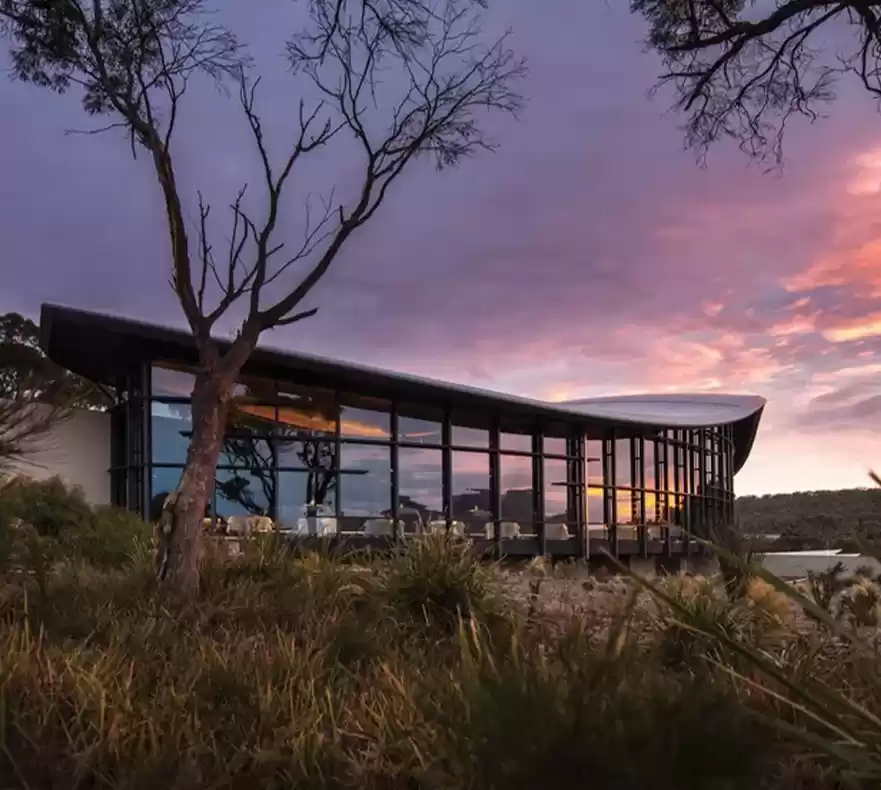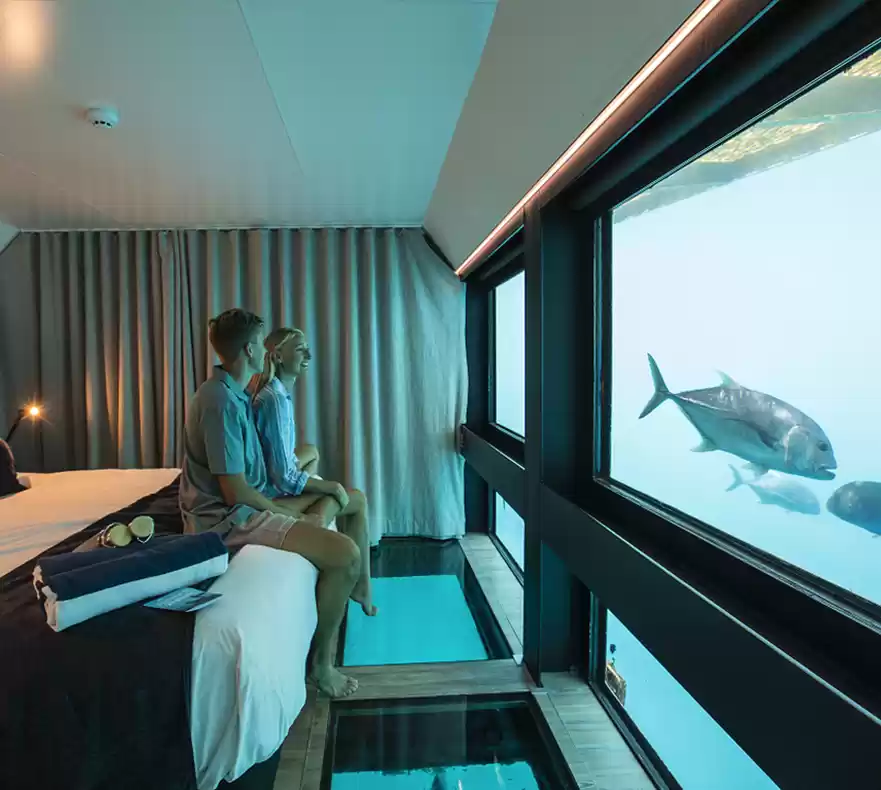Australia Tourism and Travel Guide

Discover the Best of Australia & Plan Your Next Big Trip!
Add a Zing to Your Trip With These Perfect Itineraries & Experiences
Unwind at The Most Unique Accommodations While Exploring Australia
Best Time to Visit Australia: When To Travel?
Australia's weather patterns are quite distinct, with four seasons that vary in temperature and weather conditions.
In summer, which runs from December through February, you can expect hot and dry weather across the country. Temperatures range from about 20°C to 37°C (68°F to 99°F) in the major cities, making it a great time to hit the beaches and enjoy water-based activities.
As the leaves start to fall, autumn arrives from March through May. During this season, temperatures begin to cool down slightly, with averages ranging from 17°C to 35°C (63°F to 95°F). Autumn is a great time to explore the country's national parks and enjoy outdoor activities before the winter chill sets in.
Winter, which runs from June through August, is the coolest season in Australia. The average temperatures range from 11°C (52°F) in the south to 30°C (86°F) in the north. This is a great time to hit the ski slopes in the alpine regions of New South Wales and Victoria or explore the wildlife in the Northern Territory.
Spring, from September through November, is a beautiful time of year to visit Australia, with temperatures ranging from 17°C to 35°C (63°F to 95°F) from the south to the north. The weather is mild, and the countryside is blooming with colorful wildflowers. It's a great time to explore the outdoors, take scenic drives, and visit the wine regions of South Australia and Victoria.
How to Get A Visa To Travel to Australia?
If you're planning to visit Australia as a tourist, you'll need to apply for a tourist visa. Here's how you can do it:
Make sure you're eligible: First things first, make sure you're eligible for a tourist visa. You need to be a genuine tourist, have enough funds to support yourself during your stay in Australia and have a clean criminal record.
Get your documents ready: You'll need a valid passport, proof of financial support, proof of return travel, and any other relevant documents like a letter of invitation if someone is hosting you in Australia.
Create an ImmiAccount: Head to the Australian Government's Department of Home Affairs website and create an ImmiAccount. This will let you apply for the visa online, keep track of your application, and receive updates on the visa decision.
Fill out the application form: Once you've got your ImmiAccount set up, you can start filling out the online application form. Make sure you give accurate information, or your application might be denied.
Pay the application fee: The cost of a tourist visa to Australia depends on how long you're planning to stay. Make sure you pay the fee on time, or it might delay the processing of your application.
Submit your application: Once you've filled out the form and paid the fee, you can submit your application through your ImmiAccount.
It can take a few weeks to hear back about your application, so be patient. You can check your application status online with your ImmiAccount. If your application is approved, you'll be allowed to visit Australia for a certain period of time. You can check more details about getting an Australia Tourist Visa, here.
Best Places To Explore in Australia: What to Add to Your Travel Bucketlist?
Australia is a massive and diverse country and has a lot to offer to its visitors. From extraordinary landscapes, beautiful beaches and national parks to some beautiful wine regions, there are a lot of popular places to visit in Australia.
Sydney: Sydney is a must-visit city in Australia, with so many things to see and do. If you're into landmarks, you can't miss the Sydney Opera House or the Harbour Bridge - they're iconic for a reason. For a more relaxed day, head to one of the many beaches like Bondi or Coogee. If you're into food and shopping, you'll love the trendy neighborhoods like Surry Hills or Paddington. And if you're looking for some nightlife, King's Cross is the place to be.
Melbourne: Melbourne is the cultural capital of Australia, with a vibrant art scene and amazing coffee culture. Stroll through the city's laneways to discover street art and hidden cafes. If you're into sports, catch a game of Aussie Rules football at the Melbourne Cricket Ground. For a relaxing day out, head to the Royal Botanic Gardens or take a drive down the Great Ocean Road.
Brisbane: Brisbane is a laid-back city with a warm climate and friendly locals. Take a ferry along the Brisbane River for amazing views of the city. If you're into animals, check out the Lone Pine Koala Sanctuary. And if you're looking for some adventure, head to the nearby Moreton Island for sandboarding, snorkeling, and dolphin watching.
Gold Coast: The Gold Coast is the perfect destination for a fun-filled vacation. With theme parks like Dreamworld, Movie World, and Wet'n'Wild, you'll never run out of things to do. Surfers Paradise is a great place to shop, eat, and party. And of course, don't forget to hit up the beaches for some sun, sand, and surf.
Canberra: Canberra may be the capital city, but it's also a great destination for nature lovers. Check out the Australian National Botanic Gardens or hike up Mount Ainslie for stunning views of the city. If you're into history, visit the Australian War Memorial or the National Museum of Australia. And if you're there in spring, don't miss Floriade, the city's annual flower festival.
Perth: Perth is a city that's all about the great outdoors. Head to Kings Park and Botanic Garden for a picnic with a view. Take a day trip to Rottnest Island to hang out with the friendly quokkas. And if you're into wine, head to the nearby Swan Valley for some of Australia's best vineyards.
Adelaide: Adelaide is a city that's all about culture and food. Take a walk through the Adelaide Central Market to sample some of the city's best produce. Visit the Art Gallery of South Australia or the South Australian Museum for a dose of culture. And if you're there in March, don't miss the Adelaide Fringe Festival for a month-long celebration of art, music, and performance.
Hobart: Hobart is a quaint city that's all about relaxation and nature. Visit the historic Salamanca Place for some shopping and dining. Take a tour of the Cascade Brewery or the Museum of Old and New Art for a dose of culture. And if you're up for some adventure, take a drive down the East Coast to visit Wineglass Bay and the Bay of Fires.
Darwin: Darwin is a tropical city with a unique cultural heritage. Take a stroll through the Darwin Waterfront for some shopping and dining. Visit the Mindil Beach Sunset Market for some local flavor. And if you're into history, check out the Darwin Military Museum or the Fannie Bay Gaol.
Based on the length of your trip, here are some suggestions for your Australian adventure:
-
Short trip (1 week or less): If you have limited time, we suggest focusing on one or two destinations. You can explore the vibrant city of Sydney and its iconic landmarks such as the Sydney Opera House and the Harbour Bridge. Alternatively, you can visit the beautiful coastal city of Brisbane and enjoy its sunny beaches and laid-back lifestyle. If you're looking for something more adventurous, head to the Great Barrier Reef for some of the best snorkeling and diving in the world.
-
Medium trip (1-2 weeks): With a bit more time, you can explore more of Australia's diverse regions. You could visit Melbourne, known for its world-class food and coffee scene, or explore the stunning natural beauty of Tasmania. You could also take a road trip along the Great Ocean Road, stopping at scenic coastal towns and landmarks such as the Twelve Apostles.
-
Long trip (3 weeks or more): If you have more than three weeks, you can experience even more of Australia's unique landscapes and culture. You could visit the Northern Territory and explore the rugged beauty of the Red Centre, including Uluru and Kata Tjuta. You could also visit Western Australia and explore the stunning beaches and wilderness areas, such as the Margaret River wine region and the rugged Kimberley region. Another option is to take a camper van or motorhome and drive along the East Coast, stopping at various towns and national parks along the way.
Remember, Australia is a large country with vast distances between cities and attractions.
Best Things To Do in Australia
Australia offers a variety of unique experiences that visitors shouldn't miss. Here are a few:
-
Visit the Great Barrier Reef: The Great Barrier Reef is one of the world's largest coral reef systems, and it's home to an incredible diversity of marine life. Snorkeling or diving in the reef is a must-do activity for nature lovers.
-
Explore Uluru-Kata Tjuta National Park: Located in the heart of Australia's Red Centre, Uluru (Ayers Rock) is a massive sandstone monolith and an iconic symbol of Australia. The national park is also home to Kata Tjuta (The Olgas), a group of large, domed rock formations.
-
Drive the Great Ocean Road: The Great Ocean Road is a scenic coastal drive that stretches over 240 kilometers along Australia's southern coast. Along the way, you can stop at stunning beaches, dramatic cliffs, and the famous Twelve Apostles rock formations.
-
Visit Sydney: Australia's largest city has a lot to offer visitors, including the iconic Sydney Opera House, the beautiful harbor, and the famous Bondi Beach.
-
Experience the Outback: Australia's vast interior is known as the Outback, and it offers a unique landscape of rugged wilderness, ancient rock formations, and remote communities. Exploring the Outback can be an unforgettable adventure.
-
Taste the local cuisine: Australian cuisine is a unique blend of influences from around the world, and there are many dishes that you can't find anywhere else. Some must-try foods include meat pies, fish and chips, and the famous Australian barbecue.
-
Meet Australian wildlife: Australia is home to many unique animals that you won't find anywhere else in the world, such as kangaroos, koalas, and wallabies. Visiting a wildlife sanctuary or taking a wildlife tour can be a great way to see these animals up close.
- Island hopping: Island hopping in the Whitsundays is one of the best experiences that you can't miss when in Australia. The Whitsunday Islands are a collection of 74 islands located off the coast of Queensland, known for their crystal-clear waters, white sand beaches, and stunning coral reefs.
- Take a ride on the Ghan: The Ghan is a three-day, two-night journey from Darwin to Adelaide, with stops in Katherine, Alice Springs and Coober Pedy. You'll travel through the heart of Australia, passing through vast deserts and ancient landscapes.
- Watch the turtle hatching: Watching turtles hatch is a truly unique experience that can be witnessed in a few locations in Queensland, Australia. One of the best places to see this natural wonder is Mon Repos, near Bundaberg. Mon Repos is a protected turtle rookery and is home to the largest concentration of nesting marine turtles on the eastern Australian mainland. The best time to see turtles hatch is between November and January, but this can vary depending on the species of turtle.
You can check out more about the unique experiences in Australia, here.
The Best of Australia's Cuisine: What To Eat?
Australia is a food lover's paradise, where one can find an incredible range of culinary delights from all corners of the world. The country boasts of a vibrant food culture, where every imaginable cuisine is available to satisfy one's taste buds. From exotic seafood to juicy steaks, crispy pizzas to spicy curries, and from traditional Aussie meat pies to flavorful sushi, Australia has it all. For travelers looking for a taste of India, there is a vast variety of Indian food options available across the country. From mouth-watering chicken tikka masala to spicy vindaloo and buttery naan, travelers can indulge in a wide array of Indian delicacies, and satisfy their craving for authentic Indian food in Australia.
For those seeking a more upscale dining experience, Australia's award-winning restaurants push the limits on culinary creativity, blending global food influences with a deep appreciation for local ingredients. And of course, no trip to Australia is complete without trying the infamous vegemite, a salty spread made from yeast extract that is a staple of the Australian breakfast table.
But even beyond the fine dining experiences, Australia's love for a good BBQ and a humble road trip snack ensures that there's always something delicious to be found. So whether you're a foodie seeking out the latest gastronomic trends or just looking for a tasty bite to eat, Australia's food scene has something for everyone.
Here's what you shouldn't miss eating when in Australia:
Meat pie: This Australian favourite is made of flaky pastry filled with minced meat and gravy. Sometimes a variety of vegetables are also used.
Moreton Bay Bug: This is one of the most popular seafood in Australia. This is like lobster and is said to taste even better. They are usually cut in half and then grilled or barbecued after seasoning.
Kangaroo meat: Yes, you can actually eat a kangaroo! Kangaroo meat is common on most restaurants menus and supermarket shelves in Australia. Kangaroo meat is lean red meat and can be prepared as steaks, burgers, sausages and more.
Emu meat: Yes, emu meat is also common in Australia just like kangaroo meat. Emu meat is used in burgers, pizza toppings and meat pies.
Fish and chips: You cannot ignore the delights of fish and chips in Australia. Fresh fish is lightly fried to crispiness and is paired with French fries. This is the best meal to have on a sunny beach day in Australia.
Barramundi: Barramundi is actually a fried fish with soft meat and crisply fried skin. This is one of the best street food in Australia.
Find out more about Australia's food scene, here.
How Much Would It Cost To Travel To Australia?
With proper planning and wise decisions, you can optimize your budget and fully enjoy your trip to Australia. Take into consideration various factors that may affect your expenses when estimating the overall cost of your Australian vacation.
-
Accommodation: Accommodation costs can vary depending on the location, type of accommodation and time of year. Hostels and budget hotels are great options for those looking for a more affordable stay, while luxury hotels and resorts will be more expensive.
-
Transport: Getting around Australia can also be costly, particularly if you plan on flying between cities. However, there are many ways to save money on transportation, such as using public transport, carpooling or renting a car.
-
Food and Drink: Eating out in Australia can be expensive, particularly in major cities. However, there are plenty of affordable dining options available, including food trucks, local markets and cafes.
-
Activities and Sightseeing: Australia has a wealth of activities and sights to offer, from free natural attractions to paid cultural experiences. Researching and prioritizing activities can help you stay on budget while still enjoying your trip.
-
Season: The cost of travel can vary depending on the season you visit. High season (December-February) and school holidays tend to be more expensive due to increased demand.
Here are some of the top airlines, flying between India & Australia: Singapore Airlines, Malaysian Airlines, Sri Lankan Airlines, Air India, Quantas, Thai Airways.
To save money on your Australian holiday, consider the following tips:
- Look for deals on flights and accommodation.
- Use public transport or rent a car instead of flying.
- Cook your own meals or eat at affordable cafes and markets.
- Take advantage of free activities and natural attractions.
- Use discount cards or coupons for attractions and activities.
With a bit of research and planning, you can enjoy a memorable Australian holiday without breaking the bank. To know more about managing your budget while planning a trip to Australia, click here.


